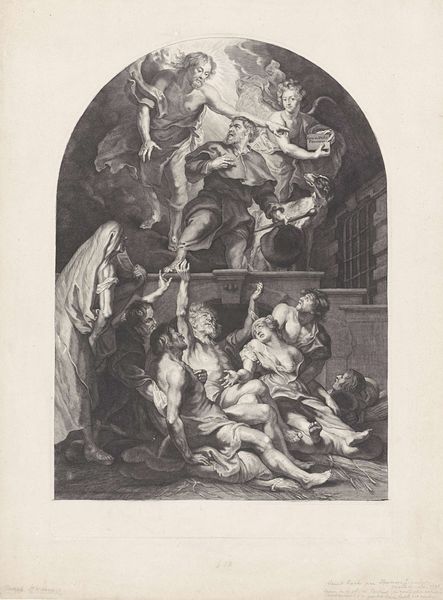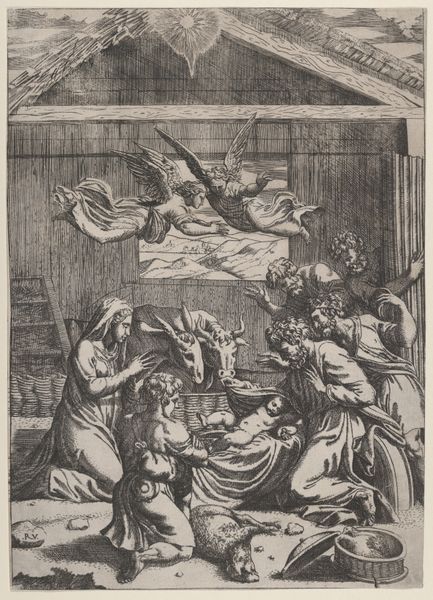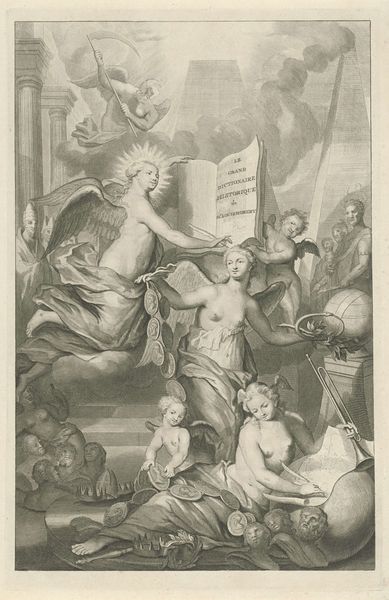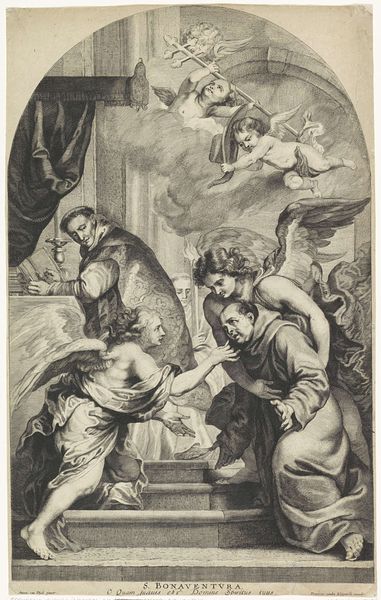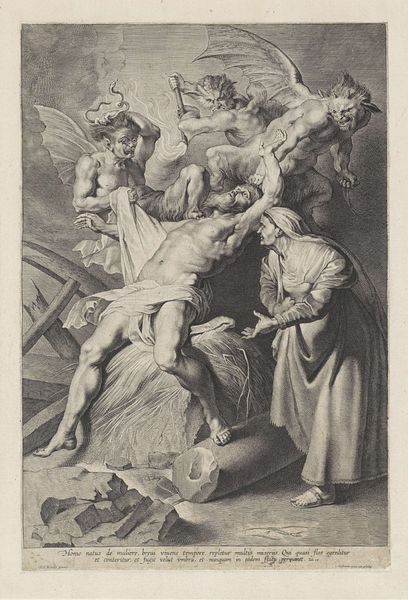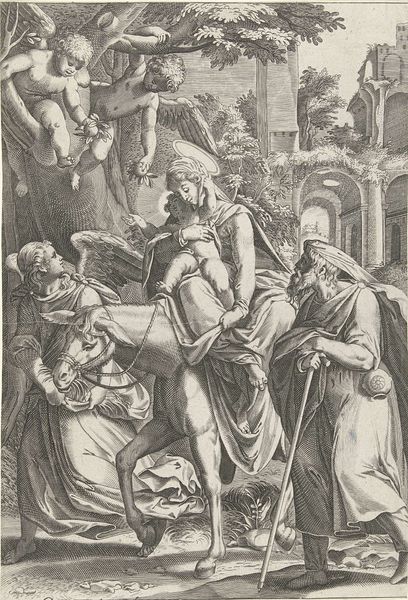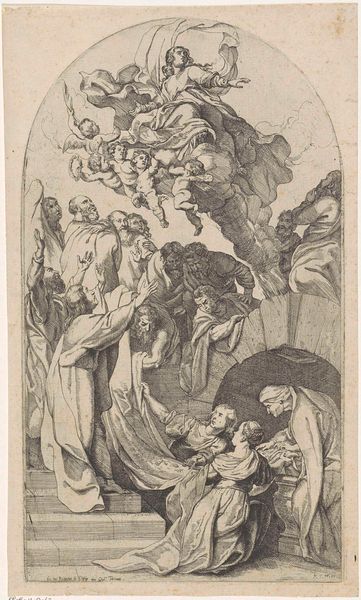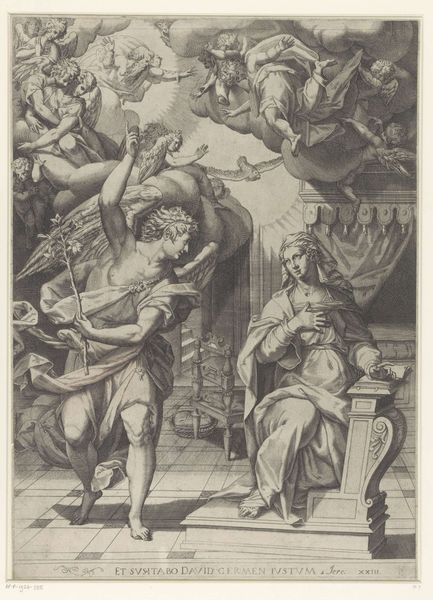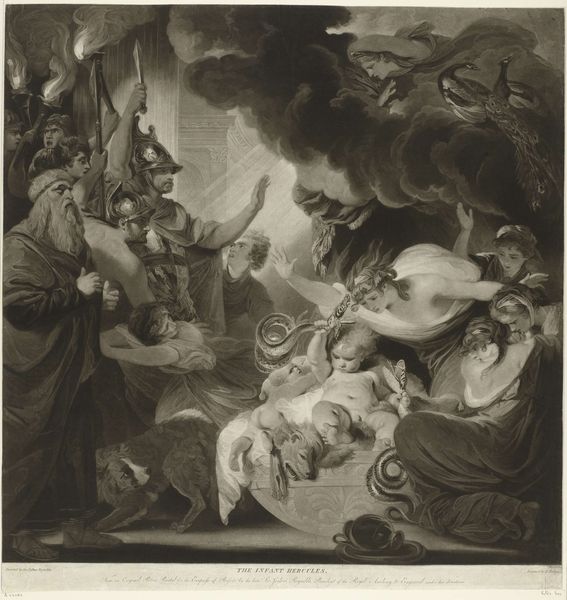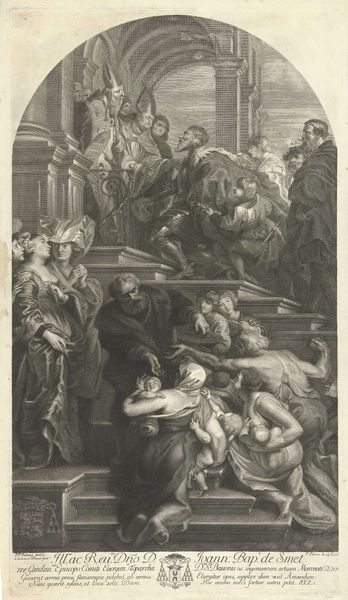
H. Rochus wordt door Christus aangesteld tot patroon van de pestlijders 1626
0:00
0:00
pauluspontius
Rijksmuseum
print, engraving
#
baroque
# print
#
old engraving style
#
figuration
#
history-painting
#
engraving
Dimensions: height 553 mm, width 362 mm
Copyright: Rijks Museum: Open Domain
Editor: This is "H. Rochus wordt door Christus aangesteld tot patroon van de pestlijders," or "Saint Roch Appointed by Christ as Patron Saint of Plague Victims," a 1626 engraving by Paulus Pontius. It’s overwhelmingly tragic; you have these figures stricken with plague reaching up towards Roch, who himself seems to be receiving a benediction from Christ above. What can we unpack from this incredibly sorrowful image? Curator: What immediately strikes me is the historical context: plague wasn't just a disease, it was a societal disruptor, highlighting existing inequalities. The desperation captured here speaks to a broader social breakdown. How does seeing Christ appointing Roch reinforce existing power structures in a time of crisis? Editor: That’s interesting. I was initially focused on the suffering, but framing it as a commentary on power shifts the narrative. Are you suggesting that Pontius might be subtly critiquing the Church’s role during such crises? Curator: Subtly, perhaps, but undeniably. Notice the figures below, are they empowered by Roch’s appointment or merely subjected to it? Are they healed or simply 'managed'? The Church's response to crises has always been politically loaded. Also, considering the baroque style, we should look at the themes of power, class, and the portrayal of marginalized bodies, reflecting the society for whom this print was intended. How would it have been received then, versus now? Editor: I hadn't thought of it that way – less about individual salvation and more about societal control. That does change my perspective quite a bit. Curator: Exactly! Art isn't created in a vacuum; it is actively reflecting, reinforcing, or even rebelling against the status quo. And engravings, being easily reproduced, allowed for the wider dissemination of such ideas. It prompts us to consider whose voices are amplified during times of crisis, and who is left to suffer in silence. Editor: Wow, I'm going to see engravings a little differently from now on, and this one especially. Curator: I hope this broadened how we look at social justice then, and how art continues to relate now.
Comments
No comments
Be the first to comment and join the conversation on the ultimate creative platform.
